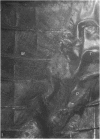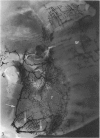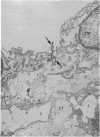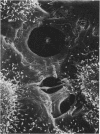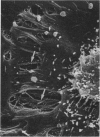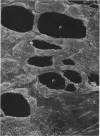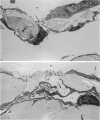Abstract
Golden hamster diaphragms were observed with both light and electron microscopes to examine the distribution of lymphatic stomata and their morphological features. Lymphatic stomata were present on the inferior surface but absent on the superior surface. This observation was also supported by the results of India ink injection into the peritoneal and pleural cavities. On the inferior surface of the diaphragm, lymphatic stomata tended to form radial rows running from the centre to the periphery; i.e. they were found throughout the muscular and tendinous portions, although the density of their distribution was higher in the latter. Lymphatics and lymphatic lacunae in the tendinous portion were generally smaller than those in the muscular portion. Lymphatic flow into the lymphatics of the tendinous portion seems to be slow, suggesting that lymphatic stomata in the portion may be a functionally inactive reserve.
Full text
PDF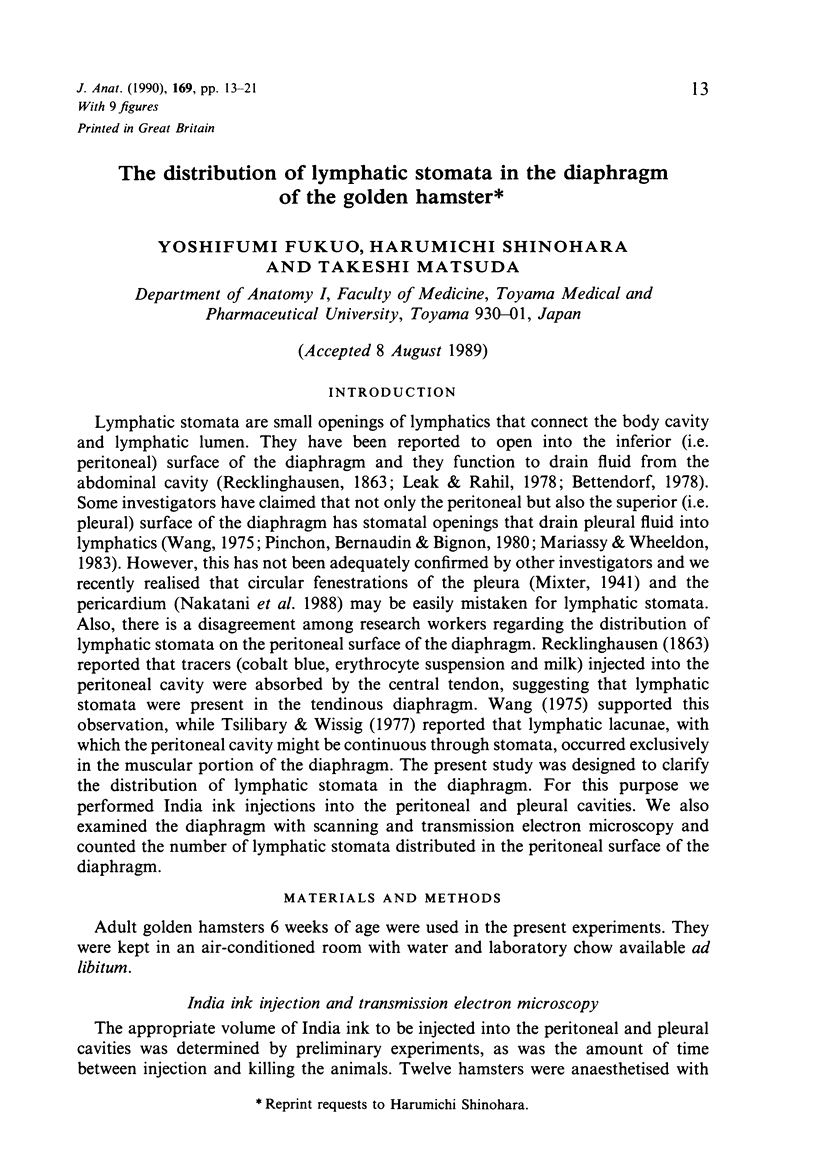
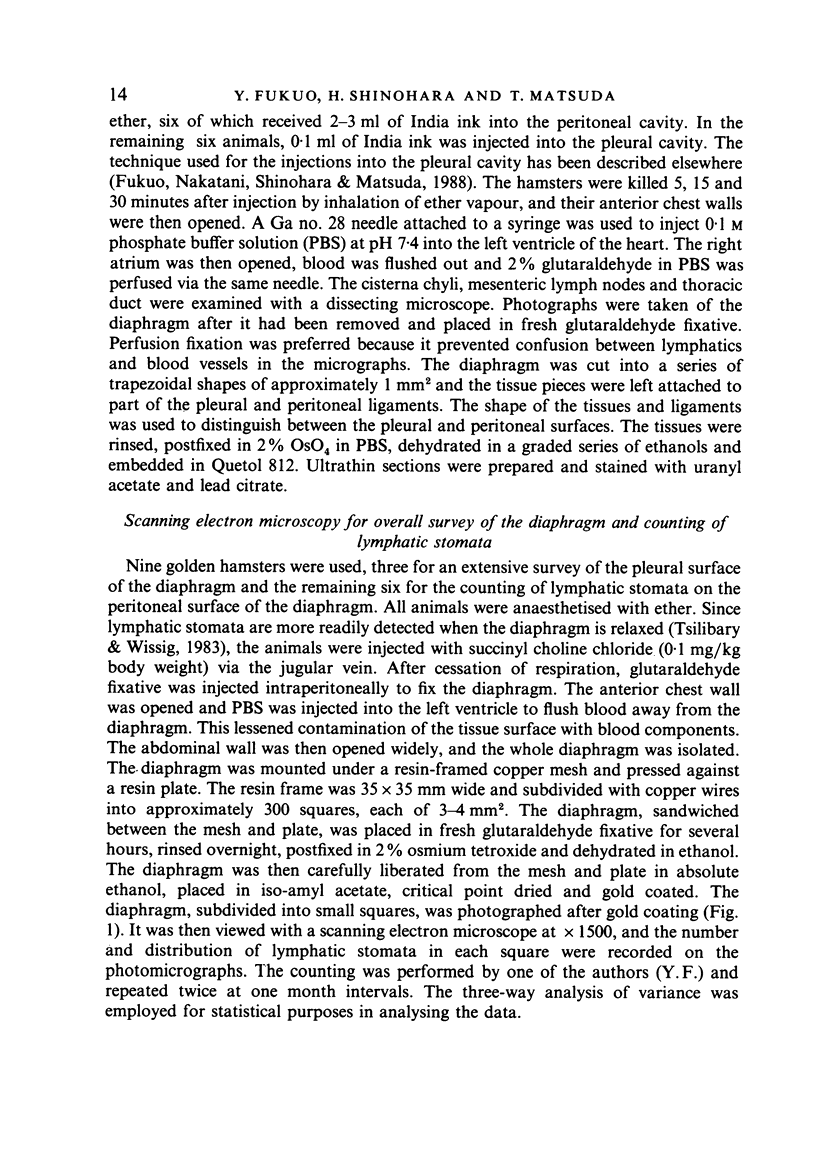

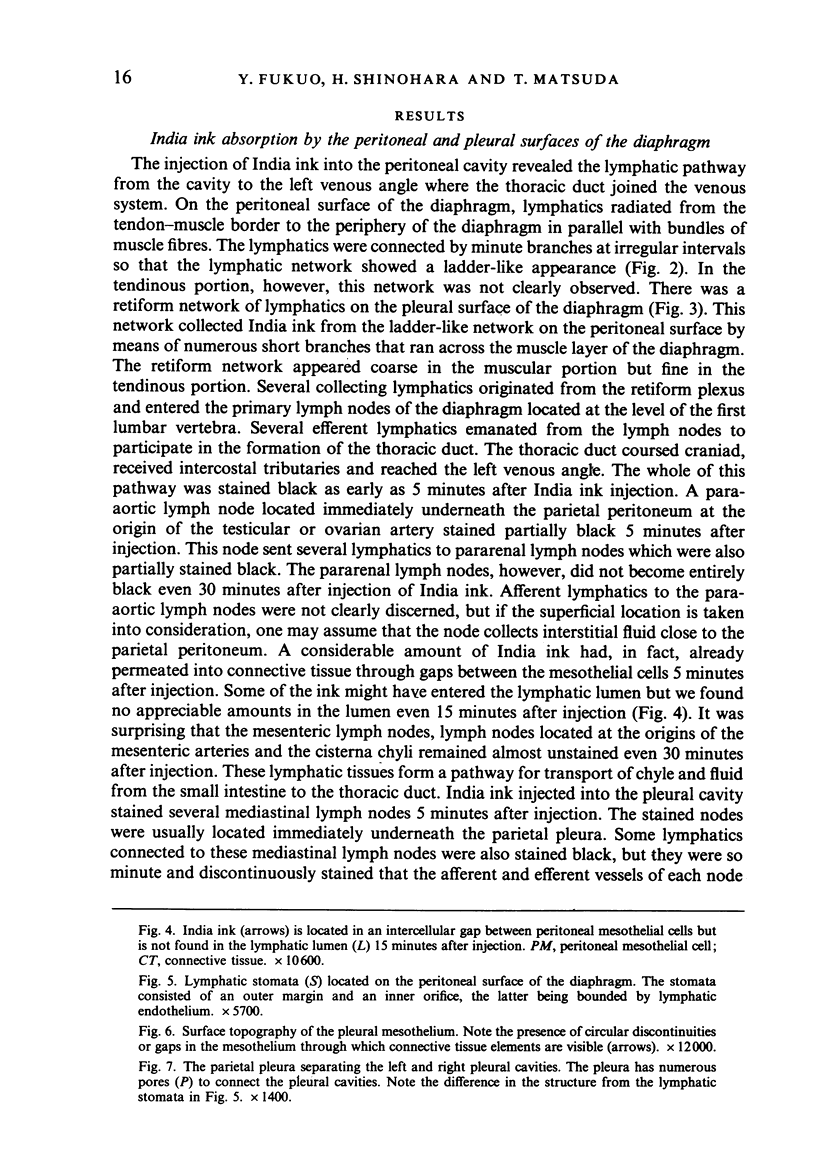
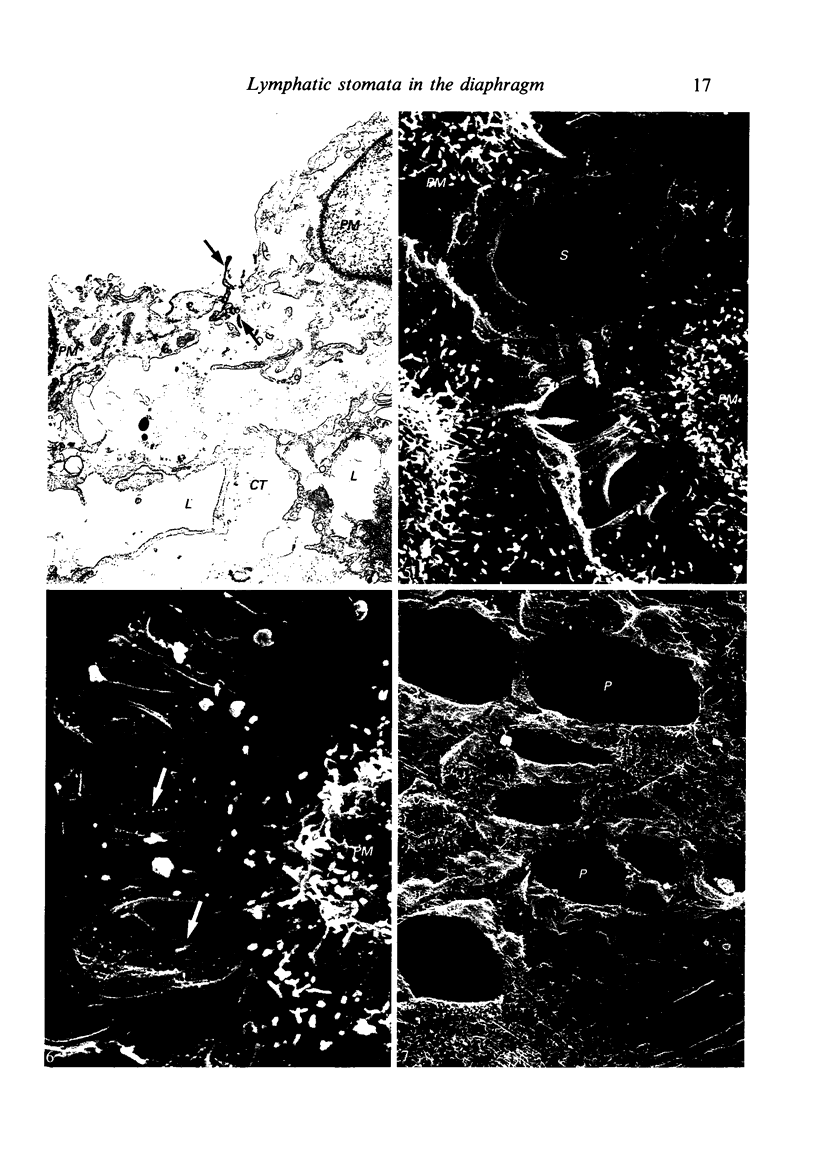
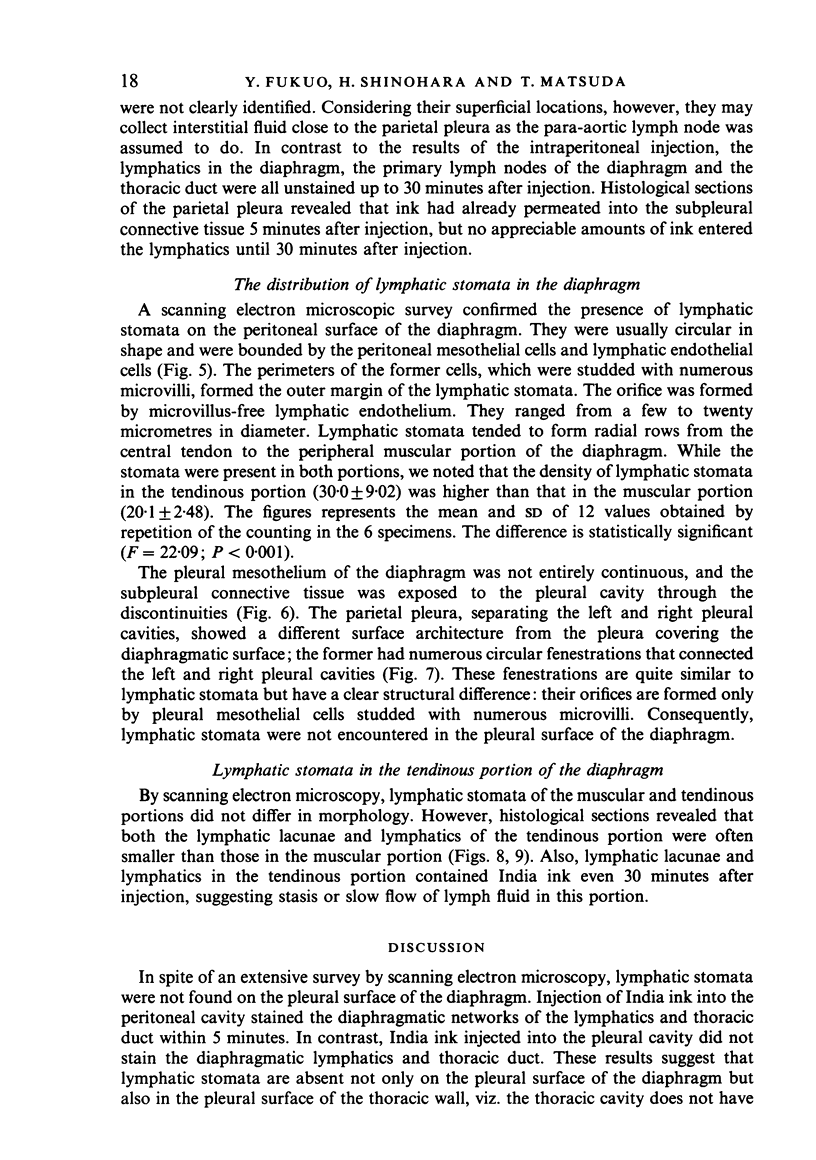

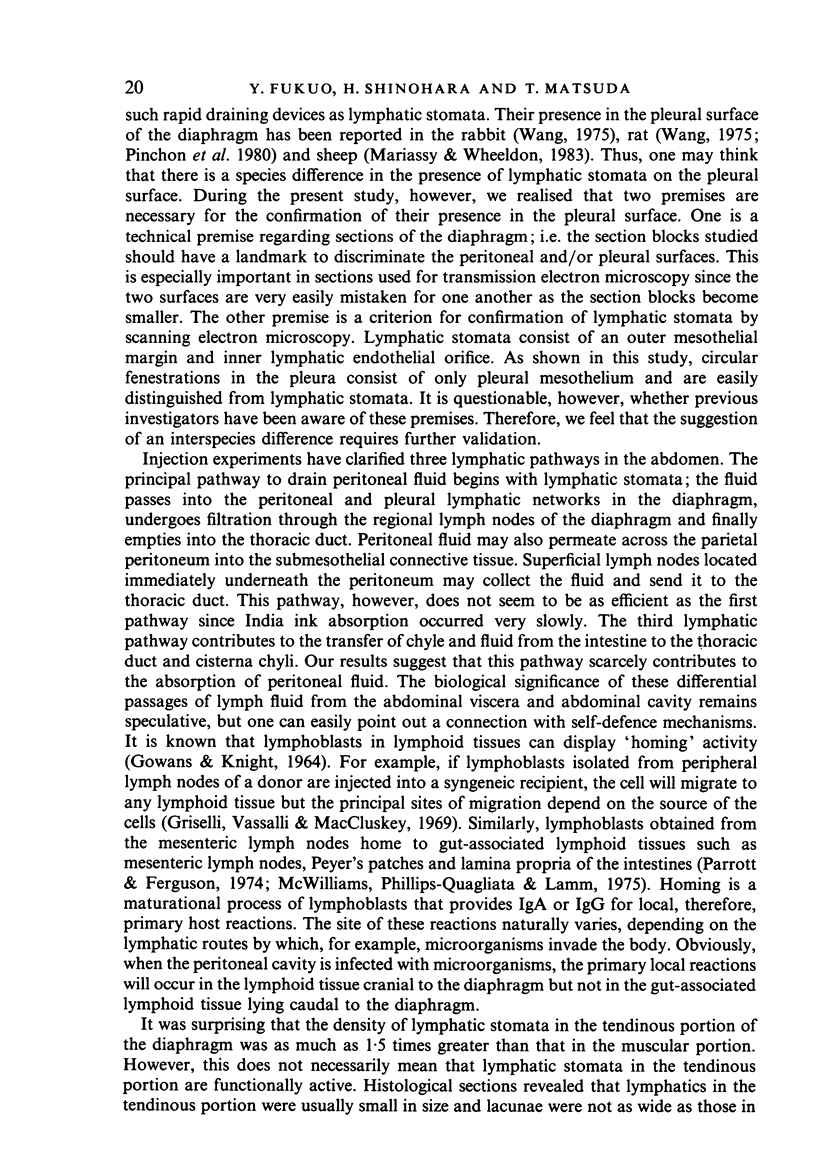
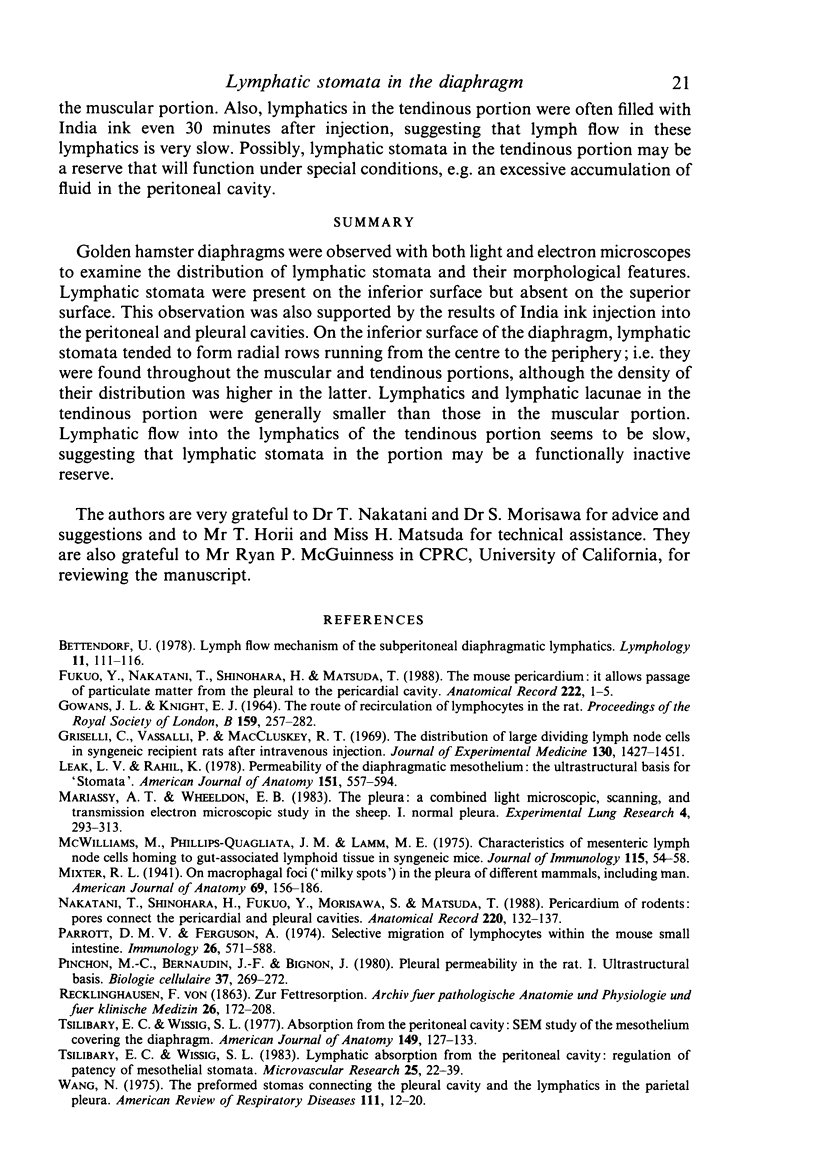
Images in this article
Selected References
These references are in PubMed. This may not be the complete list of references from this article.
- Bettendorf U. Lymph flow mechanism of the subperitoneal diaphragmatic lymphatics. Lymphology. 1978 Sep;11(3):111–116. [PubMed] [Google Scholar]
- Fukuo Y., Nakatani T., Shinohara H., Matsuda T. The mouse pericardium: it allows passage of particulate matter from the pleural to the pericardial cavity. Anat Rec. 1988 Sep;222(1):1–5. doi: 10.1002/ar.1092220102. [DOI] [PubMed] [Google Scholar]
- GOWANS J. L., KNIGHT E. J. THE ROUTE OF RE-CIRCULATION OF LYMPHOCYTES IN THE RAT. Proc R Soc Lond B Biol Sci. 1964 Jan 14;159:257–282. doi: 10.1098/rspb.1964.0001. [DOI] [PubMed] [Google Scholar]
- Griscelli C., Vassalli P., McCluskey R. T. The distribution of large dividing lymph node cells in syngeneic recipient rats after intravenous injection. J Exp Med. 1969 Dec 1;130(6):1427–1451. doi: 10.1084/jem.130.6.1427. [DOI] [PMC free article] [PubMed] [Google Scholar]
- Leak L. V., Rahil K. Permeability of the diaphragmatic mesothelium: the ultrastructural basis for "stomata". Am J Anat. 1978 Apr;151(4):557–593. doi: 10.1002/aja.1001510409. [DOI] [PubMed] [Google Scholar]
- Mariassy A. T., Wheeldon E. B. The pleura: a combined light microscopic, scanning, and transmission electron microscopic study in the sheep. I. Normal pleura. Exp Lung Res. 1983 May;4(4):293–314. doi: 10.3109/01902148309055016. [DOI] [PubMed] [Google Scholar]
- McWilliams M., Phillips-Quagliata J. M., Lamm M. E. Characteristics of mesenteric lymph node cells homing to gut-associated lymphoid tissue in syngeneic mice. J Immunol. 1975 Jul;115(1):54–58. [PubMed] [Google Scholar]
- Nakatani T., Shinohara H., Fukuo Y., Morisawa S., Matsuda T. Pericardium of rodents: pores connect the pericardial and pleural cavities. Anat Rec. 1988 Feb;220(2):132–137. doi: 10.1002/ar.1092200204. [DOI] [PubMed] [Google Scholar]
- Parrott D. M., Ferguson A. Selective migration of lymphocytes within the mouse small intestine. Immunology. 1974 Mar;26(3):571–588. [PMC free article] [PubMed] [Google Scholar]
- Tsilibary E. C., Wissig S. L. Absorption from the peritoneal cavity: SEM study of the mesothelium covering the peritoneal surface of the muscular portion of the diaphragm. Am J Anat. 1977 May;149(1):127–133. doi: 10.1002/aja.1001490111. [DOI] [PubMed] [Google Scholar]
- Tsilibary E. C., Wissig S. L. Lymphatic absorption from the peritoneal cavity: regulation of patency of mesothelial stomata. Microvasc Res. 1983 Jan;25(1):22–39. doi: 10.1016/0026-2862(83)90041-9. [DOI] [PubMed] [Google Scholar]
- Wang N. S. The preformed stomas connecting the pleural cavity and the lymphatics in the parietal pleura. Am Rev Respir Dis. 1975 Jan;111(1):12–20. doi: 10.1164/arrd.1975.111.1.12. [DOI] [PubMed] [Google Scholar]



